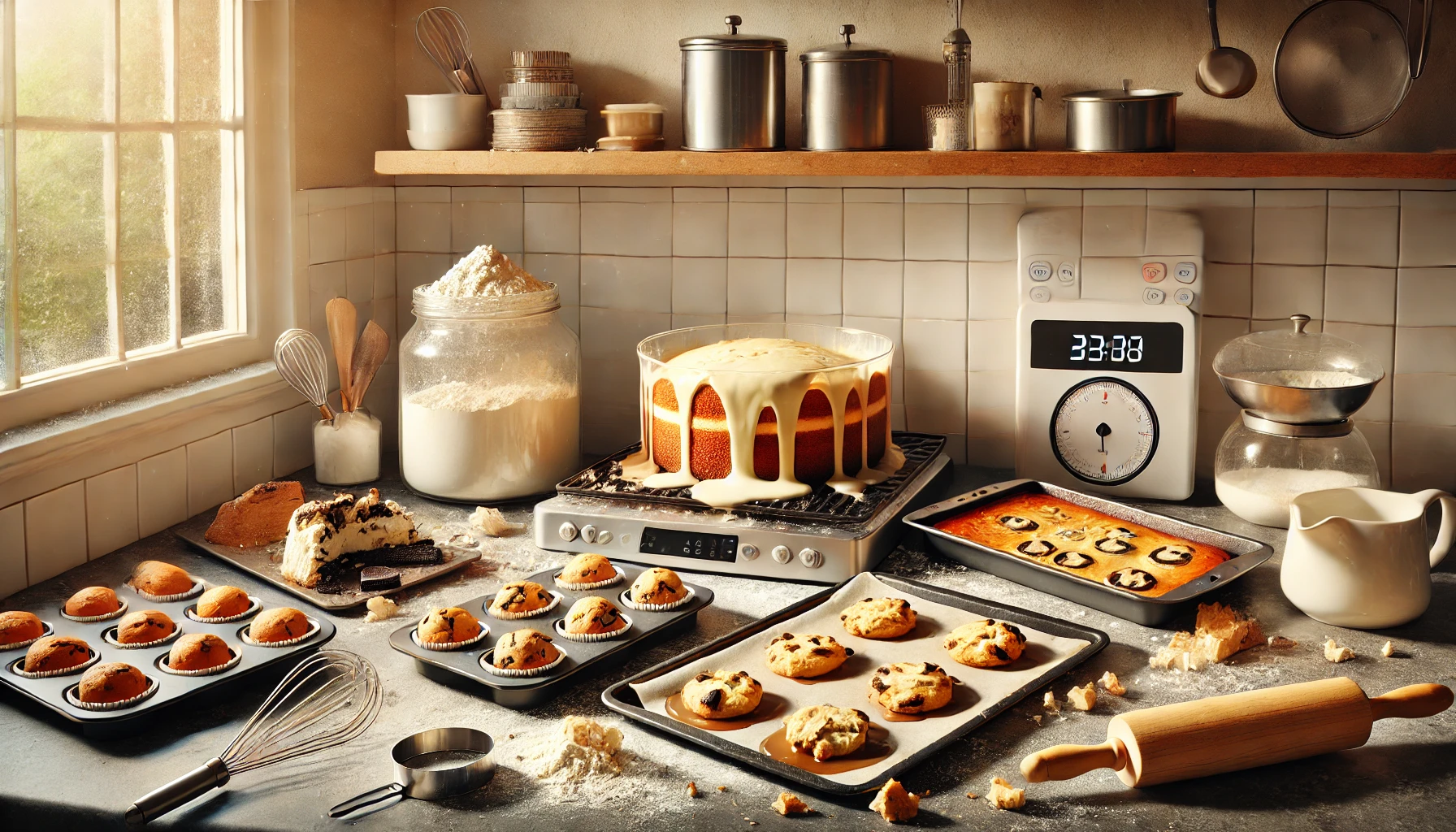Baking is a science. One wrong measurement, one skipped step, or even one degree off in temperature can completely change the outcome of your dessert.
If you’ve ever ended up with dry cupcakes, dense cakes, or cookies that spread into a single blob, you’re not alone. In this article, we’ll cover the most common baking mistakes — and how to avoid them for consistent, delicious results every time.
1. Not Measuring Ingredients Properly
Why it matters:
Baking requires precision. Too much flour? Dry and crumbly. Not enough leavening? Flat and dense.
How to fix it:
- Use a digital kitchen scale for best accuracy
- When using cups: spoon flour into the cup and level off with a knife
- Avoid scooping directly from the bag (you pack in more flour)
2. Using Cold Ingredients When They Should Be Room Temperature
Why it matters:
Butter, eggs, and milk blend better when at room temp. Cold ingredients can cause the batter to curdle or bake unevenly.
How to fix it:
- Take ingredients out 30–60 minutes before baking
- In a rush? Place eggs in warm water for 10 minutes, microwave butter (low power, short bursts)
3. Overmixing the Batter
Why it matters:
Too much mixing (especially after adding flour) develops gluten, making baked goods tough instead of tender.
How to fix it:
- Mix until just combined, especially in cakes and muffins
- Use a spatula to fold gently when adding dry to wet
4. Not Preheating the Oven
Why it matters:
Putting batter into a cold oven disrupts baking chemistry — things rise unevenly, or not at all.
How to fix it:
- Always preheat your oven fully before baking
- Use an oven thermometer — many ovens run too hot or cold
5. Ignoring Oven Hot Spots
Why it matters:
Uneven heat causes cakes to bake lopsided or cookies to burn on one side.
How to fix it:
- Test your oven by baking slices of bread to find the hot spots
- Rotate trays halfway through baking
6. Opening the Oven Door Too Often
Why it matters:
Opening the door lets out hot air and drops the temperature — causing cakes to collapse or bake unevenly.
How to fix it:
- Don’t open during the first 20 minutes (especially for cakes and soufflés)
- Use the oven light instead
7. Substituting Ingredients Without Understanding Their Role
Why it matters:
Butter, oil, eggs, sugar, and flour all serve specific structural roles. Replacing one without knowing how it affects the recipe can lead to disaster.
How to fix it:
- Follow recipes exactly until you understand substitutions
- Use tested substitutions (like flax egg or applesauce) in small batches first
8. Using Expired Leavening Agents
Why it matters:
Old baking powder or baking soda won’t create the rise you need.
How to fix it:
- Test baking powder: mix with warm water — it should fizz
- Test baking soda: mix with vinegar — bubbles mean it’s still good
- Replace every 6 months for best results
9. Not Letting the Baked Goods Cool Properly
Why it matters:
Hot cakes are fragile and crumbly. Frosting too soon melts the topping. Sliced too early? You lose moisture and shape.
How to fix it:
- Let baked goods cool in the pan for 10–15 minutes
- Transfer to a wire rack to cool completely
- Chill before decorating or slicing, when needed
10. Skipping Recipe Instructions
Why it matters:
Instructions aren’t just suggestions — they’re there for a reason.
How to fix it:
- Always read the recipe completely before starting
- Understand the order of steps and plan ahead
Bonus Tips for Baking Success
- Use quality ingredients — especially for butter, chocolate, and vanilla
- Don’t bake when distracted or rushed
- Practice with simple recipes before trying layered or filled desserts
- Keep a baking journal — learn from each batch!
Final Thought: Bake Smarter, Not Harder
We all make mistakes in the kitchen — but baking doesn’t have to be a guessing game. By learning what to watch out for, you’ll improve not just your results, but your confidence too.
So the next time something flops, don’t be discouraged. Use it as a lesson — and bake again. Because every great baker started with a few burned cookies. 🧁🔥
